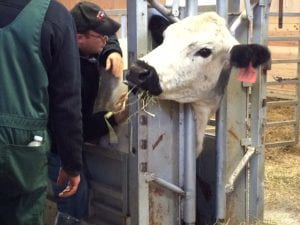
By June 11, 2023, all over the counter, medically important, antimicrobial products will require a prescription from your veterinarian in order to purchase. There are still some unknowns about this transition, but now is a time to assess what that means for your farm.
This has been a phased process. In 2012 the Food and Drug Administration (FDA) released the guidance, The Judicious Use of Medically Important Antimicrobial Drugs in Food-Producing Animals (#209). Implementation began in 2016 with Guidance for the Industry #213, the Veterinary Feed Directive (VFD). The directive mandated the requirement of a prescription for fed antimicrobials, whether in water or feed. Each prescription is for a specific length of time and group of livestock.
The need for the guidances and directives is to protect medically important antimicrobials from the more rapid development of resistance. The loss of efficacy can occur with any drug, but care needs to be taken so we do not lose those products that are medically important for human health. With the elimination of OTC antimicrobials for livestock use, veterinary diagnosis is needed prior to treatment to ensure these products are used judiciously.
The newest guidance, #263 was published June 2021. It recommends sponsors of medically important antimicrobials to voluntarily change product labels. The label addition is, “Caution: Federal law restricts this drug to use by or on the order of a licensed veterinarian.” Previous changes have been implemented voluntarily, so that is the process this time as well. Some of the products include oxytetracyclines, penicillins, sulfa-based antibiotics, tylosin, cephaparin, lincomycin, and gentamicin.
To obtain a prescription, a valid client patient relationship (VCPR) will be needed. This is a working relationship with a veterinarian or practice. The veterinarian will be familiar with you and your farm, and diagnose and prescribe treatment. The product can be purchased through the vet or a distributor. Those with a VCPR in place will see little change.
Though Guidance #263 was aimed at industry, you can take steps to prepare. What were you using OTC antimicrobials for? Are there ways to reduce sickness? Proper nutrition and reducing stress can help. Are there vaccinations to prevent versus treat, such as for pinkeye or footrot?
If you don’t work with a vet, now is a good time to start. Critical components of the VCPR include a written agreement, knowledge of the operation and animals, written treatment protocols, maintenance of treatment records, and provide drugs for specific time frames and use. The vet will also be available if there are adverse reactions or follow up is needed. A valid VCPR has been a topic of quality assurance programs for many years.
This is not the time or reason to stockpile OTC antimicrobial products. They have expiration dates and prop-er disposal is needed when they expire.
Contact me if you have questions or want more information or better yet, talk to your veterinarian.

